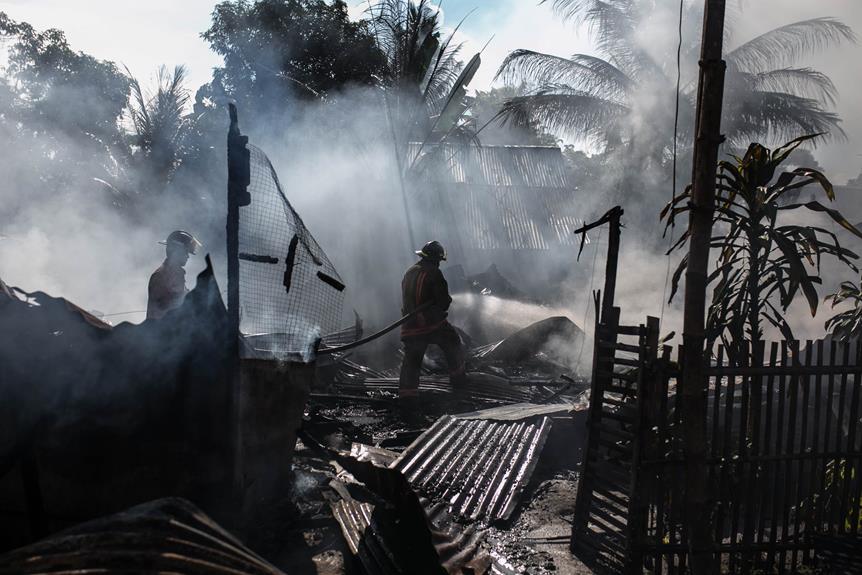Nestled in the southwestern region of Bangladesh, lies Khulna District, a land steeped in history and adorned with a stunning tapestry of rivers and diversity. With its strategic location and captivating landscapes, Khulna District has witnessed the ebb and flow of time, leaving behind a rich cultural heritage that continues to thrive to this day. From its vibrant urban centers to the peaceful rural communities, Khulna District beckons explorers to uncover its hidden treasures and unravel the stories that have shaped its identity. Join us as we embark on a journey through this historical land, where the rivers flow and the diversity flourishes, promising an experience like no other.
Geography and Climate
Khulna District, located in southwestern Bangladesh, boasts a diverse geography and climate that contribute to its unique natural beauty and agricultural productivity. The district is characterized by various geographical features, including rivers, wetlands, and forests. The major rivers of Khulna District, such as the Rupsa, Arpangachhia, Shibsa, Pasur, and Koyra, not only provide a picturesque landscape but also play a crucial role in the district's irrigation system and transportation network. Additionally, the district is home to the Sundarbans, the largest mangrove forest in the world, which further enhances its natural beauty. In terms of climatic conditions, Khulna District experiences a tropical monsoon climate with hot and humid summers and mild winters. The district's geographical and climatic attributes contribute to its agricultural productivity, making it a significant contributor to the country's economy.
Demographics
The population and composition of the district are vital aspects to consider when examining the demographics of Khulna District in Bangladesh. According to the 2022 Census of Bangladesh, Khulna District had a population of 2,613,365, with 40.8% residing in urban areas. The population density was 595 people per square kilometer. The literacy rate for individuals aged 7 and over was 80.6%, surpassing the national average of 74.7%. In terms of religious diversity, 76.63% of the population identified as Muslim, 22.68% as Hindu, and 0.66% as Christian. It is worth noting that the number of Hindus and Christians has declined significantly, although their proportion within the population has remained constant since 1981. These demographic statistics provide insight into the population growth and religious diversity within Khulna District.
| Religion | Percentage |
|---|---|
| Hinduism | 22.68% |
| Islam | 76.63% |
| Christianity | 0.66% |
Rivers of Khulna District
Located in Bangladesh, Khulna District is characterized by its diverse network of rivers flowing through the region. The major rivers of Khulna District include the Rupsa, Arpangachhia, Shibsa, Pasur, and the Koyra. These rivers not only provide a picturesque landscape but also hold immense tourism potential. The scenic beauty of the rivers attracts tourists from far and wide, offering opportunities for boat rides, fishing, and other water-based activities. Moreover, the rivers of Khulna District also play a crucial role in wildlife conservation. The surrounding wetlands and mangrove forests provide habitats for a rich variety of flora and fauna, including the famous Sundarbans, a UNESCO World Heritage Site. Efforts are being made to protect and preserve these rivers and their associated ecosystems, ensuring the sustainability of tourism and the conservation of wildlife in the region.
Religion in Khulna District
Religion holds a significant presence in the diverse cultural fabric of Khulna District, shaping the lives and beliefs of its inhabitants. The district is home to a harmonious coexistence of different religious communities, with Hinduism and Islam being the predominant faiths. Hindu-Muslim relations in Khulna District have historically been characterized by tolerance and mutual respect, contributing to the district's cultural heritage. The Hindu population accounts for 22.68% of the total population, while Muslims make up 76.63%. Despite the dominant presence of Islam, the district has a small Christian minority comprising 0.66% of the population. Over the years, the number of Hindus and Christians has decreased, although the proportion has remained constant. This religious diversity adds to the rich tapestry of Khulna District's social and cultural landscape.
Education in Khulna District
Education plays a vital role in the development and progress of Khulna District, fostering knowledge, skills, and opportunities for its residents. In terms of primary education, the district boasts around 1,700 primary and secondary schools, catering to a student population of 320,000. However, it is concerning to note that 15% of these schools lack access to drinking water sources, with the majority relying on tubewells (55%) and rainwater harvesting (20%) for drinking water. Additionally, the district is equipped with approximately 300 healthcare centers, including community clinics, union health centers, union health sub-centers, and upazila health complexes. These facilities ensure that residents have access to essential healthcare services, promoting the overall well-being of the community. Nevertheless, there is room for improvement in terms of providing adequate infrastructure and resources to enhance the quality of education and healthcare facilities in Khulna District.
Healthcare in Khulna District
The provision of healthcare services in Khulna District is an essential component of ensuring the well-being and welfare of its residents. The district has a number of healthcare facilities, including community clinics, union health centres, union health sub-centres, and upazila health complexes. These facilities play a crucial role in providing healthcare services to the population of Khulna District. However, there are also several healthcare challenges that need to be addressed. These challenges include a lack of adequate healthcare infrastructure, shortage of medical professionals, and limited access to healthcare services in remote areas. Despite these challenges, efforts are being made to improve the healthcare system in Khulna District, such as the establishment of new healthcare facilities and the recruitment of more medical professionals. By addressing these challenges, the healthcare system in Khulna District can be strengthened, ensuring better healthcare services for its residents.
| Healthcare Facilities | Challenges |
|---|---|
| Community Clinics | Lack of adequate infrastructure |
| Union Health Centres | Shortage of medical professionals |
| Union Health Sub-Centres | Limited access to healthcare services in remote areas |
| Upazila Health Complexes |
Historical Background of Khulna District
Khulna District has a rich historical background that dates back to its establishment as the first sub-division of the United Bengal Province in 1842. Here are three key points that paint a picture of the district's historical significance and cultural heritage:
- British colonial influence: Khulna District was under British rule during the 19th and early 20th centuries. The British established administrative offices, railway lines, and industries in the area, shaping its infrastructure and economy.
- Role in the independence movement: Khulna District played a significant role in the Bangladesh Liberation War of 1971. The district witnessed intense fighting and guerrilla activities against the Pakistani occupation forces, making it an important site in the struggle for independence.
- Cultural diversity: Khulna District is home to a diverse population, comprising various ethnic and religious communities. This diversity has contributed to a vibrant cultural heritage, with festivals, music, dance, and cuisine reflecting the traditions and customs of different groups.
Despite the challenges of population growth and modernization, Khulna District's historical background and cultural heritage continue to shape its identity and provide a window into its past.
Formation of Khulna District
With a rich historical background and cultural heritage, Khulna District now transitions to the subtopic of its formation, tracing the origins and development of this significant region in Bangladesh. The formation of Khulna District can be attributed to various factors, including population growth and the cultural heritage of the region. The district was initially established as a sub-division of the United Bengal Province in 1842 under Jessore District. However, it was officially designated as a separate district on 1 June 1882, through a gazette notification published from Kolkata. The formation of Khulna District involved the inclusion of Khulna and Bagerhat sub-divisions from Jessore District, as well as Satkhira sub-division from 24 Pargana District. This marked a significant milestone in the administrative and geographical landscape of Khulna District, paving the way for its continued growth and development.
Population Trends in Khulna District
Having witnessed significant changes in its population over the years, Khulna District in Bangladesh has experienced notable trends in demographic growth and distribution. Here are three key points that paint a picture of the population trends in the district:
- Population Growth: Khulna District has seen a steady increase in its population over time. According to the 2022 Census of Bangladesh, the district had a population of 2,613,365. This growth can be attributed to factors such as improved healthcare facilities, better living conditions, and increased agricultural productivity.
- Urbanization Rate: The district's urbanization rate has been on the rise. Currently, 40.8% of the population resides in urban areas. This trend can be attributed to the availability of employment opportunities, better infrastructure, and improved living standards in urban centers.
- Changing Demographics: Khulna District has a diverse population in terms of religion and ethnicity. The majority of the population, 76.63%, is Muslim, while 22.68% follow Hinduism. Additionally, there is a small Christian minority comprising 0.66% of the population.
These population trends highlight the dynamic nature of Khulna District, reflecting both its growth and the changing composition of its residents.
Infrastructure in Khulna District
The population trends in Khulna District have not only shaped its demographics but also influenced the development of its infrastructure. The district has undergone significant infrastructure development in recent years, especially in terms of its transportation network.
Here is a table highlighting the key aspects of infrastructure development in Khulna District:
| Infrastructure Type | Description |
|---|---|
| Road Network | Khulna District has a well-developed road network, with a |
| number of national and regional highways connecting it to | |
| other major cities and districts. The roads are paved and | |
| well-maintained, facilitating smooth transportation. | |
| Railways | The district is served by the Khulna Railway Station, |
| which is an important transportation hub. It connects | |
| Khulna with other major cities and towns in Bangladesh. | |
| The railway network plays a crucial role in facilitating | |
| both passenger and freight transport. |
The infrastructure development in Khulna District has greatly improved the connectivity and accessibility within the district and beyond. It has contributed to the economic growth of the region by facilitating the movement of goods and people. The well-developed road and railway networks have enhanced the efficiency of transportation and boosted trade and commerce in the district.
Frequently Asked Questions
What Are the Major Crops Grown in Khulna District?
The major crops grown in Khulna District include rice, jute, sugarcane, potatoes, and vegetables. Agriculture is a significant part of the district's economy, with farmers employing various agricultural practices such as irrigation, crop rotation, and the use of fertilizers. The fertile soil and favorable climate of the region contribute to the successful cultivation of these crops. Additionally, the district's proximity to major rivers provides ample water resources for irrigation, further supporting agricultural productivity.
How Has the Literacy Rate in Khulna District Changed Over the Years?
The literacy rate in Khulna District has shown positive trends over the years. According to the 2022 Census of Bangladesh, the literacy rate for individuals aged 7 and over was 80.6%, which is higher than the national average of 74.7%. This indicates a significant improvement in education initiatives within the district. However, it is important to note that further efforts are needed to ensure universal access to quality education and to bridge the gap between urban and rural areas in terms of literacy rates.
What Is the Ethnic Composition of the Population in Khulna District?
Khulna District, known as a cultural melting pot, has a diverse ethnic composition. According to the 2011 census, 76.63% of the population in Khulna District identified as Muslim, while 22.68% identified as Hindu. There is also a small minority of Christians, comprising 0.66% of the population. Although the population of Hindus and Christians has remained constant since 1981, their absolute numbers have seen a significant decline. This rich ethnic diversity contributes to the vibrant cultural heritage of Khulna District.
What Are the Main Industries in Khulna District?
The main industries in Khulna District are manufacturing, agriculture, and fishing. Manufacturing plays a significant role in the district's economy, with industries such as textiles, jute, and shrimp processing being prominent. The district is also known for its agricultural production, including rice, jute, and sugarcane. Fishing is another vital industry, given the district's proximity to the Bay of Bengal and the presence of major rivers. These industries contribute to the economic growth and employment opportunities in Khulna District.
What Are Some Popular Tourist Attractions in Khulna District?
Some popular tourist attractions in Khulna District include boat tours along the rivers, allowing visitors to explore the natural beauty of the region. One of the highlights is the Sundarbans wildlife sanctuary, a UNESCO World Heritage Site known for its diverse ecosystem and the presence of the Royal Bengal Tiger. The sanctuary offers opportunities for wildlife spotting and bird watching, making it a must-visit destination for nature enthusiasts.





